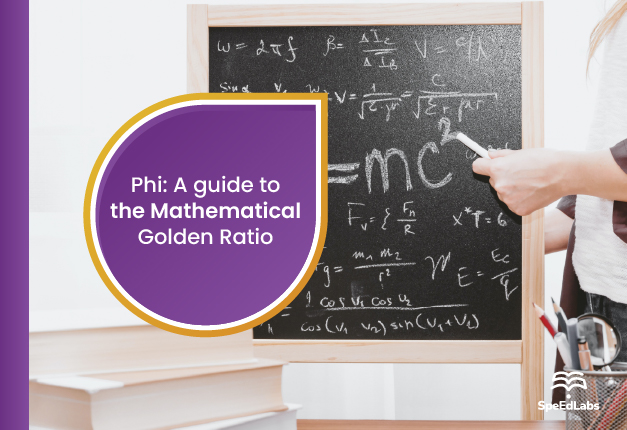The golden ratio, also known as the golden section, the golden mean, or the golden proportion, is a term that refers to divine proportion, also known as phi by the Greeks. It represents a specific element ratio and is all about “relationship.” It, like pi and e, is an irrational number, which means that its terms continue indefinitely after the decimal point without repeating.
Take a stick and cut it into two pieces to represent Phi.
The portions are said to be in the golden ratio if the ratio between these two portions is the same as the ratio between the overall stick and the larger segment.
The Greek mathematician Euclid first described this, though he called it “the division in extreme and mean ratio.”
The Fibonacci Sequence is the simplest way to demonstrate this element. Without going into too much detail, this sequence is the sum of the two numbers preceding it. Back in the day, the Greeks used the Fibonacci Sequence to create a visual pattern to aid their designs. When the sequence is turned into squares and laid side by side to form rectangles, a spiral known as the golden spiral begins to form.
The Golden Ratio’s History and Origin
The width to length ratio of rectangles has traditionally been regarded as 1.61803 39887, which is the most enticing to the eye.
The Greeks gave this ratio the name “golden ratio” as a result. In mathematics, the numerical value is referred to as “phi,” after the Greek sculptor Phidias. Golden rectangles can be seen in the space between the columns. This Greek city of Athens building is covered in golden rectangles. Since the time of the Greeks, people have understood the mathematics-related idea of the number phi. The fact that its terms continue indefinitely after the decimal point without repeating makes it an irrational number, similar to pi and e.
Numerous myths about Phi have developed over many centuries, including the notion that it stands for ideal beauty or is only present in nature.
Does Nature Contain the Golden Ratio?
The renowned Fibonacci Sequence has captivated all mathematicians, artists, designers, and scientists. The pervasiveness suggests its importance as a fundamental characteristic and the great functionality it exhibits in nature.
Plants provide a special representation of the golden ratio in flower petals. In this instance, the golden ratio is derived from the Fibonacci sequence of numbers, which creates the golden ratio over repeated intervals. This pattern determines how all-organic life evolves, grows, and matures. It provides a mathematical explanation for the closely spaced petals of a rose or a head of cabbage.
The Taj Mahal is another example of how the Golden Ratio was used in Indian history. The Taj Mahal exhibits golden proportions from the size of the main section below the domes to the width of its grand central arch and the length of the windows inside the arch. For those who are curious, the ratio of 1:1.61 frequently appears in nature. It can be seen everywhere, including in the structure of clouds, the shape of the universe, and even the dimensions of the human body. The Golden Ratio is a component that humans have incorporated into everything. It is employed actively in music, art, and mathematics.
Use of the Golden Ratio in Business
The Golden Ratio has been incorporated into the logos of numerous corporations.
Twitter is one example of this. The Twitter logo is made up of perfect circles that are proportioned according to the Golden Ratio. It has an easy-to-recognize logo that makes it very recognizable. The incredible thing about it is how complex the final product is when you look at the grid that was used to create it.
Apple is renowned for using the golden ratio throughout its corporate operations.
Because the logo’s geometry is not particularly rigid, the magic of Apple’s ruthless pursuit of this ideal form is lost.
Why not use the ratio that is found in nature the next time you are trying to innovate with your logo? You will have the option of engaging in some extraordinary design experiences, and it will sharpen your design sense so that you can incorporate straightforward fractions and proportions into your creative process.
Exploring with an open mind, learning, and coming to your conclusions about the facts and implications are the best ways to determine for yourself where Phi manifests and where it is imagined. Enjoy the phi-nomemon, whether it is to deepen your understanding and appreciation of the harmony and beauty in life or to use it, as Leonardo Da Vinci and other masters before you did, to inspire your artistic creations.
Also published on Medium.
